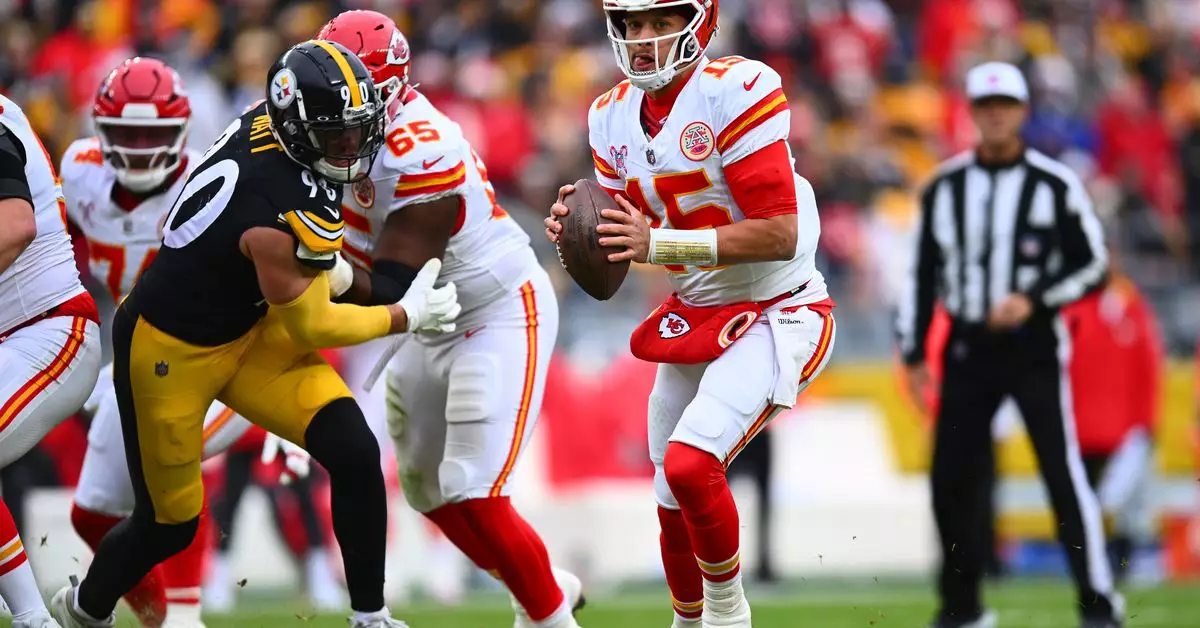In a significant milestone for streaming platforms, Netflix has officially set a new benchmark in broadcasting live sports. The company’s airing of NFL games on Christmas Day garnered unprecedented viewership, with Nielsen ratings confirming that these matchups were the most-streamed NFL games in U.S. history. The Kansas City Chiefs versus the Pittsburgh Steelers matchup achieved an average minute audience (AMA) of 24.1 million, closely followed by the Houston Texans facing the Baltimore Ravens, which peaked at 24.3 million. Collectively, these two high-stakes games attracted nearly 65 million viewers, indicating a substantial shift in how audiences consume live sports content.
Despite past challenges with streaming outages—particularly during the highly publicized boxing match between Mike Tyson and Jake Paul that strained its systems—Netflix managed to hold up under the pressure of millions of simultaneous viewers for the NFL games. This success came coupled with an impressive lineup of entertainment, featuring star performances from globally recognized artists like Mariah Carey and Beyoncé. Indeed, Beyoncé’s halftime show, dubbed the “Beyoncé Bowl,” peaked at 27 million live viewers, leading to Netflix’s decision to offer a standalone replay, further capitalizing on this cultural moment. This strategy not only showcases Netflix’s agility in the market but also emphasizes its commitment to integrating high-quality entertainment alongside live sports.
With the NFL’s broadcast agreement ensuring that Christmas Day games will remain on Netflix for the next two years, the implications for the sports broadcasting industry are profound. This partnership solidifies Netflix as a formidable player in the sports realm, traditionally dominated by cable networks. As streaming services continue to evolve, audiences may no longer feel tethered to traditional television, particularly for significant events like Christmas Day football.
Interestingly, this shift in viewership patterns has stirred reactions from other sports leagues. The NBA, for instance, which typically enjoys a more stable viewership during the holiday without NFL competition, reported its most-watched Christmas Day in five years. Averaging 5.25 million viewers per game, the NBA demonstrated resilience amid the rising interest in Netflix’s streaming sporting events. The league’s games not only increased in viewership but also experienced an impressive 84 percent surge year-over-year, emphasizing a diversification of viewing interests among sports fans.
As streaming platforms continue to integrate live sports into their offerings, the landscape of how audiences engage with these events is shifting dramatically. Netflix’s significant viewership numbers on Christmas Day demonstrate a growing willingness among consumers to embrace streaming alternatives over traditional formats. This transformation hints at a future where streaming services will increasingly dictate the course of sports broadcasting, offering unique opportunities for innovation and viewer engagement in an ever-evolving digital age. The NFL’s foray into this new space exemplifies the shifting influence of technology on sports, presenting exciting new horizons for both fans and broadcasters alike.


Leave a Reply